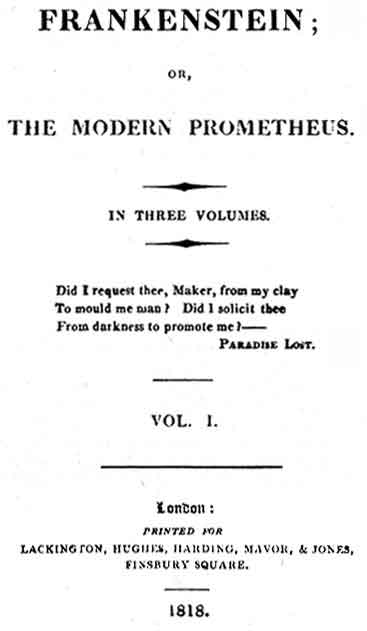Review: Frankenstein

In the most famous gothic horror story ever told, Shelley confronts the limitations of science, the nature of human cruelty and the pathway to forgiveness. ‘The rain pattered dismally against the panes, and my candle was nearly burnt out, when, by the glimmer of the half-extinguished light, I saw the dull yellow eye of the creature open...’ Victor Frankenstein’s monster is stitched together from the limbs of the dead, taken from ‘the dissecting room and the slaughter-house’. The result is a grotesque being who, rejected by his maker and starved of human companionship, sets out on a journey to seek his revenge. In the most famous gothic horror story ever told, Shelley confronts the limitations of science, the nature of human cruelty and the pathway to forgiveness. Begun when Mary Shelley was only eighteen years old and published two years later, this chilling tale of a young scientist’s desire to create life – and the consequences of that creation – still resonates today.
Okay, calling this a review is probably a silly idea, considering “Frankenstein”, by Mary Shelley, was written, according to Frankenstein, in 1818. Still, having finished the book (which I grabbed from Project Gutenberg and read on my Palm), I felt it worth the time to put together a little write up about my impressions about the work.
Now, to say this book is a classic is stating the obvious. Mary Shelley’s story about the bright young scientist Frankenstein and his creation has become a fixture in our culture, influencing countless subsequent works. Being the origin of the modern “mad scientist” archetype, it’s hard to underestimate how much this work has permeated our collective consciousness. And yet despite this, I was surprised to discover that the modern representations of the story are, to say the least, a departure from the original work.
Yes, despite the fact that this book is freely available (being long out of copyright), and that it’s a remarkably easy read, belying it’s age, pop culture has (with only a few exceptions) still managed to heavily distort Mary Shelley’s original work. Not the least of which is the fact that Frankestein is the name of the doctor, and not his creation. Oh, and the fact that the monster wasn’t fundamentally evil.
Indeed, what makes Mary Shelley’s work so fascinating, in my mind, is that the monster, when it first comes into being, is innocent. Despite his horrible appearance, he is a moral creature who only craves love and companionship. However, due to being initially abandoned by Victor Frankenstein, who feared what he had created, and encounters with other human beings, the monster becomes bitter and twisted, ultimately bent on inflicting a terrible revenge on his creator. In this way, Shelley’s work has often been considered a metaphor for the process of child birth. Much like the monster, a child enters this world an innocent, and it is only through interactions with that world, and the individuals in it, that the child may become an immoral creature.
As for the doctor, his primary fault is in pursuing his science without fully considering the consequences of his actions. Thus, Shelley’s work is also a cautionary tale about the dangers of modern science. At the time of it’s writing, the industrial revolution was just beginning to sweep over the world, and this book serves as a warning against the pursuit of science in the absence of morality, and the over-reaching of man into areas perceived as the sole domain of God.
So, in closing, I recommend you read this book! Not only is it historically significant, it’s also thought provoking, entertaining, and serves as an excellent introduction to older literature.
-
{% for webmention in webmentions %}
-
{{ webmention.content }}
{% endfor %}
No bookmarks were found.
{% endif %}Likes
-
{% for webmention in webmentions %}
-
{% if webmention.author %} {% endif %}
{% endfor %}
-
{% for webmention in webmentions %}
-
{{ webmention.content }}
{% endfor %}
No links were found.
{% endif %}Replies
-
{% for webmention in webmentions %}
-
{% if webmention.author %} {% endif %} {% if webmention.content %} {{ webmention.content }} {% else %} {{ webmention.title }} {% endif %}
{% endfor %}
-
{% for webmention in webmentions %}
- {% endfor %}
-
{% for webmention in webmentions %}
- {% endfor %}
No reposts were found.
{% endif %}-
{% for webmention in webmentions %}
- {% endfor %}
No RSVPs were found.
{% endif %}-
{% for webmention in webmentions %}
-
{% if webmention.author %} {% endif %} {% if webmention.content %} {{ webmention.content }} {% else %} {{ webmention.title }} {% endif %}
{% endfor %}
No webmentions were found.
{% endif %}